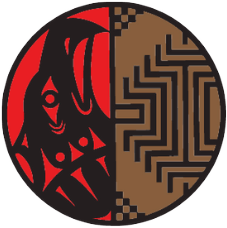Elementary Pathway 3

Download Curriculum
Corresponding Videos
“Long Before We Were Born” video:
Chapter 2, Food (at 5:25 to 14:00 minutes on timebar – total 8:41 minutes)
Pathway 3 Giving Thanks
A Native American Cultural Tradition
Historical Era
Time Immemorial to Present
Grade Levels K-3
STI Unit Overview
Lessons about Thanksgiving in elementary classrooms have historically misrepresented the events and people involved in the “first Thanksgiving.” Teachers are looking for guidance in teaching culturally and historically accurate lessons to young children. Updated research and texts supported by primary documents and tribal oral histories allow us to present more accurate representation of the story behind this tradition. The lessons presented here invite students to share their own fall and harvest traditions, and teach students some of the cultural values and traditions of our country’s indigenous peoples. Lessons are designed to be integrated into existing curriculum on fall/autumn, food, harvest, celebrations, and/or salmon prior to the Thanksgiving holiday, but could be taught independently of other curriculum as well. Lessons 1-4 are written for k-3 and should be adapted for developmental appropriateness.
Essential Questions
- How does physical geography affect Northwest Tribes' culture, economy, and where they choose to settle and trade? Grades 2/3
- What are the ways in which Tribes respond to the threats and outside pressure to extinguish their cultures and independence? Grades 2/3
- What do local tribes do to meet the challenges of reservation life; and, as sovereign nations, do to meet the economic and cultural needs of their Tribal communities? Grades K-3
Enduring Understandings From the National Museum of the American Indian
- American Indians are still here, living modern lives. Even as contemporary people, many American Indians still retain strong connections to their specific traditions.
- American Indian cultures and languages are intimately tied to the land.
- Worldviews and perspectives of American Indians may be very different from those of non-Indian students. American Indians’ traditional worldviews are often grounded in a recognition of the interrelationship among humans, animals, plants, water, winds, sky, and earth.
- Indigenous peoples of the Western Hemisphere are diverse I their languages, cultures, values, and beliefs. There is no such thing as one, single Native American culture.
- American Indian cultures have always been dynamic – adapting and changing.
- Many traditional Native values and practices are relevant to issues of worldwide importance today, such as care of the earth.
Learning Goals
Students will:
- Share family traditions of giving thanks as well as other family fall and harvest traditions.
- Learn about cultural traditions of the coastal and/or plateau tribes in Washington.
- Learn about plants and animals of their region.
- Learn about where their food comes from and Native traditions of hunting and gathering of wild foods in their region.
Standards for Social Studies, English Language Arts, Environmental and Sustainability Education, and Social Emotional Learning
Acknowledgements
We gratefully acknowledge the contribution of Heidi Bohan who granted permission to the Office of Native Education to utilize the seasonal round diagrams throughout this pathway from her published work, The People of Cascadia (2009).
Unit Developed By
Michi Thacker






